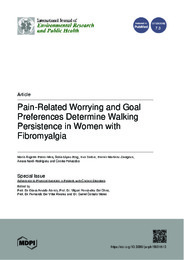Por favor, use este identificador para citar o enlazar este ítem:
https://hdl.handle.net/11000/33518Registro completo de metadatos
| Campo DC | Valor | Lengua/Idioma |
|---|---|---|
| dc.contributor.author | Pastor-Mira, María Ángeles | - |
| dc.contributor.author | López Roig, Sofía | - |
| dc.contributor.author | Toribio, Eva | - |
| dc.contributor.author | Martínez-Zaragoza, Fermín | - |
| dc.contributor.author | Nardi-Rodríguez, Ainara | - |
| dc.contributor.author | Peñacoba, Cecilia | - |
| dc.contributor.other | Departamentos de la UMH::Ciencias del Comportamiento y salud | es_ES |
| dc.date.accessioned | 2024-10-16T08:59:51Z | - |
| dc.date.available | 2024-10-16T08:59:51Z | - |
| dc.date.created | 2022-01-28 | - |
| dc.identifier.citation | International Journal of Environmental Research and Public Health 2022, 19(3), 1513 | es_ES |
| dc.identifier.issn | 1660-4601 | - |
| dc.identifier.issn | 1661-7827 | - |
| dc.identifier.uri | https://hdl.handle.net/11000/33518 | - |
| dc.description.abstract | Physical activity and exercise are relevant behaviors for fibromyalgia health outcomes; however, patients have difficulties undertaking and maintaining an active lifestyle. With a cross-sectional design, this study explored the role of pain-related worrying and goal preferences in the walking persistence of women with fibromyalgia. The sample included 111 women who attended a tertiary health setting. We adapted the Six-Minute Walk Test where participants decided either to stop or continue walking in five voluntary 6 min bouts. Women who were categorized higher in pain-related worrying reported higher preference for pain avoidance goals (t = −2.44, p = 0.02) and performed worse in the walking task (LongRank = 4.21; p = 0.04). Pain avoidance goal preference increased the likelihood of stopping after the first (OR = 1.443), second (OR = 1.493), and third (OR = 1.540) 6 min walking bout, and the risk of ending the walking activity during the 30 min task (HR = 1.02, [1.0–1.03]). Influence of pain-related worrying on total walking distance was mediated by goal preferences (ab = −3.25). In interventions targeting adherence in physical activity and exercise, special attention is needed for women who are particularly worried about pain to help decrease their preference for short-term pain avoidance goals relative to long-term goals such as being active through walking. | es_ES |
| dc.format | application/pdf | es_ES |
| dc.format.extent | 14 | es_ES |
| dc.language.iso | eng | es_ES |
| dc.publisher | MDPI | es_ES |
| dc.rights | info:eu-repo/semantics/openAccess | es_ES |
| dc.rights | Attribution-NonCommercial-NoDerivatives 4.0 Internacional | * |
| dc.rights.uri | http://creativecommons.org/licenses/by-nc-nd/4.0/ | * |
| dc.subject | fibromyalgia | es_ES |
| dc.subject | women | es_ES |
| dc.subject | pain catastrophizing | es_ES |
| dc.subject | pain-related worrying | es_ES |
| dc.subject | goal preferences | es_ES |
| dc.subject | walking | es_ES |
| dc.subject | physical activity | es_ES |
| dc.subject.other | CDU::1 - Filosofía y psicología::159.9 - Psicología | es_ES |
| dc.title | Pain-Related Worrying and Goal Preferences Determine Walking Persistence in Women with Fibromyalgia | es_ES |
| dc.type | info:eu-repo/semantics/article | es_ES |
| dc.relation.publisherversion | https://doi.org/10.3390/ijerph19031513 | es_ES |

Ver/Abrir:
2022 Pastor et al Pain-related worrying and goal preferences ijerph-19-01513-with-cover.pdf
600,81 kB
Adobe PDF
Compartir:
 La licencia se describe como: Atribución-NonComercial-NoDerivada 4.0 Internacional.
La licencia se describe como: Atribución-NonComercial-NoDerivada 4.0 Internacional.
.png)